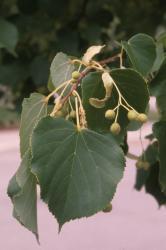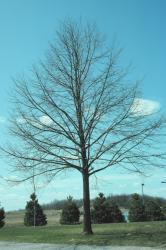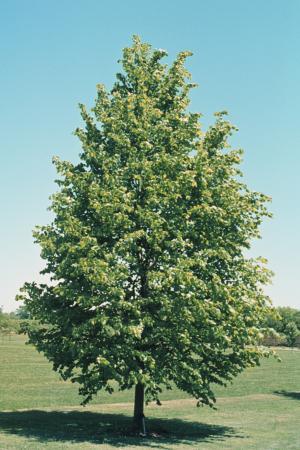June 11, 2013
| Tilia cordata Littleleaf linden
|
| Description | Littleleaf linden is chosen for its symmetrical shape, tolerance to many urban conditions and fragrant and attractive July bloom. |
| Usage | Parking lot island, specimen, street tree, shade tree. |
| Origin | Europe |
| Hardiness zone | 3 |
| Size | 15-21m |
| Form/texture | Dense symmetrical pyramid, medium texture. |
| Growth rate | Moderate, long lived. |
| Leaf | Alternate, simple, cordate. |
| Flower | Small, fragrant, yellow blooms in June, July; used by bees. |
| Fruit | Small, round brown or tan nutlet. |
| Exposure/culture | Full sun to part shade. Tolerates all soils, wide range pH. Moderate drought tolerance. Tolerates soil compaction. Few pests, though Japanese Beetle slight to moderate infestation. Easily transplanted. Pollution tolerant. Prunable as hedge when started young. Grafted cultivars may sucker from understock (maintenance issue). |
| Comments | Littleleaf Linden has been cultivated for millenia for its prunability, fragrant flowers and dark shiny leaves. The species is rarely available. Cultivars are numerous. Littleleaf linden has all the features a good urban tree: It is symmetrical, relatively pest-free and tolerant of most growing conditions save for extreme drought and compaction.
|


Reference:
Buhler, O, C. Nielson and P. Kristoffersen. 2006. Growth and Phenology of Established Tila cordata Street Trees in Response to Different Irrigation Regimes. Arboriculture and Urban Forestry 32(1): 3-9.
